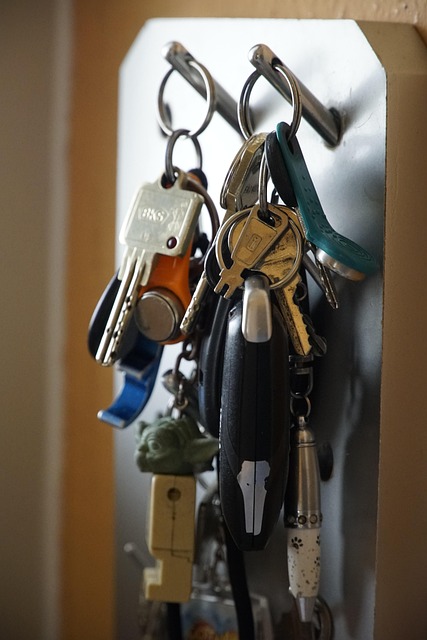In an era of rapid aging, integrating senior-friendly security systems into emergency responses is crucial. These systems, leveraging smart sensors, wearable devices, and AI, enable swift assistance for seniors facing health crises like heart issues or falls. By offering real-time monitoring, personalized assistance, and instant alerts, these solutions enhance independence while ensuring faster response times for emergencies. Key components include robust communication protocols, advanced IoT technology, user-friendly interfaces, healthcare integration, and regular testing. Effective implementation requires collaboration between tech providers, healthcare professionals, and care facilities to create seamless emergency networks, prioritizing the safety and peace of mind of older adults.
In an aging population, ensuring senior safety during emergencies is paramount. This article explores emergency response integration for senior safety systems, focusing on understanding unique needs, leveraging senior-friendly security systems, and outlining effective components of integration. We delve into benefits such as improved communication, faster response times, and enhanced independence. Implementation strategies are also discussed to guide organizations in adopting these life-saving measures, emphasizing the importance of technology that caters to seniors’ specific requirements.
- Understanding Senior Safety and Emergency Response Needs
- The Role of Integrated Senior-Friendly Security Systems
- Components for Effective Emergency Response Integration
- Benefits and Implementation Strategies for Enhanced Senior Safety
Understanding Senior Safety and Emergency Response Needs

Senior safety is a paramount concern in today’s society, given the increasing elderly population and the complexity of their living environments. Integrating senior-friendly security systems into emergency response strategies is essential to ensure timely assistance and enhanced well-being for this demographic. Understanding the unique needs of seniors is crucial to designing effective solutions. Many older adults may have specific health conditions that require monitoring, such as heart issues or diabetes, and some may rely on medication schedules or assistive devices like hearing aids or mobility aids.
These considerations underscore the importance of developing senior-centric security systems that can accurately detect emergencies and communicate effectively with both the individuals and relevant emergency services. The integration of advanced technologies, including wearable devices, smart home sensors, and automated alert systems, can play a pivotal role in enabling swift response times and improving overall senior safety. By addressing these needs, emergency response teams can better prepare for and manage situations that impact older adults’ security and independence.
The Role of Integrated Senior-Friendly Security Systems

In today’s digital era, emergency response integration for senior safety systems has become more crucial than ever. Traditional security approaches often fail to cater to the unique needs of seniors, who may have specific health conditions or limited mobility. However, with the advent of integrated senior-friendly security systems, this gap is being addressed effectively. These systems are designed to not only protect but also to assist and support seniors in their homes, ensuring their well-being and peace of mind.
The role of these innovative solutions is multifaceted. They employ advanced technologies like smart sensors, automatic fall detection, and voice-activated assistants to monitor senior citizens’ activities and health status continuously. This real-time data allows for swift emergency response coordination, where care providers or family members can be notified immediately if a senior experiences a fall, disorientation, or other critical incidents. Moreover, these systems offer personalized assistance, such as medication reminders, routine tracking, and easy access to communication tools, fostering an independent yet safe living environment for seniors.
Components for Effective Emergency Response Integration

For effective emergency response integration within senior-friendly security systems, several key components are essential. These include robust communication protocols that facilitate seamless exchange of critical information between various stakeholders, such as healthcare providers, family members, and emergency services. Advanced technology, like IoT devices and AI-driven analytics, plays a pivotal role in real-time monitoring and immediate response to alerts, ensuring timely intervention.
Additionally, user-friendly interfaces and intuitive mobile applications empower seniors to actively participate in their safety by easily reporting emergencies or accessing vital health data. Integration with existing healthcare systems allows for comprehensive risk assessment and personalized emergency plans tailored to each senior’s unique needs. Regular system updates and rigorous testing ensure reliability, enhancing overall senior safety during emergencies.
Benefits and Implementation Strategies for Enhanced Senior Safety

Integrating emergency response systems with senior safety is a game-changer, offering numerous benefits to an often overlooked demographic. Senior-friendly security systems can enhance independence and peace of mind for older adults, ensuring they receive timely assistance during emergencies. These systems provide remote monitoring, automatic fall detection, and rapid alert mechanisms, allowing caregiving agencies and families to quickly respond to critical situations.
Implementing such strategies involves a combination of technological advancements and thoughtful design. Caregivers can choose from a range of senior-friendly devices, including wearable alerts, smart home sensors, and automated voice assistants, tailored to individual needs. Effective integration requires collaboration between technology providers, healthcare professionals, and care facilities. By fostering interconnection between these entities, seamless emergency response networks can be established, ensuring a swift and coordinated reaction when seniors need it most.
Emergency response integration for senior safety systems is a vital step towards enhancing quality of life and ensuring prompt assistance for our aging population. By understanding their unique needs, implementing integrated senior-friendly security systems, and strategically incorporating key components, we can significantly benefit from improved emergency response times and enhanced senior safety. These strategies not only foster independence but also provide peace of mind for both seniors and their loved ones.
